Ferrari 12Cilindri review: the ultimate V12
It's named in honour of the 830hp, naturally aspirated V12 under its long hood, but is this grand tourer worthy of its name?
Published on Oct 05, 2024 08:00:00 AM
16,299 Views
Follow us on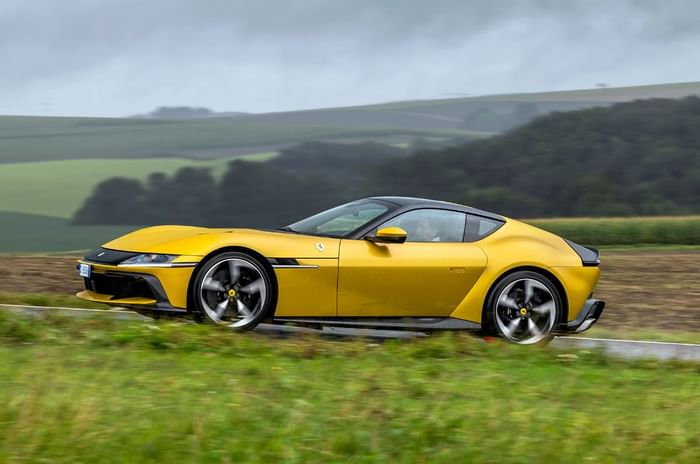
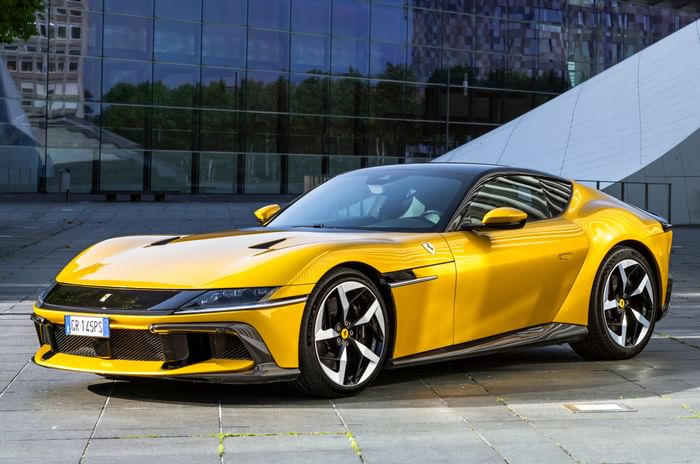

Electrically adjustable seats on the test car were incredibly comfortable.
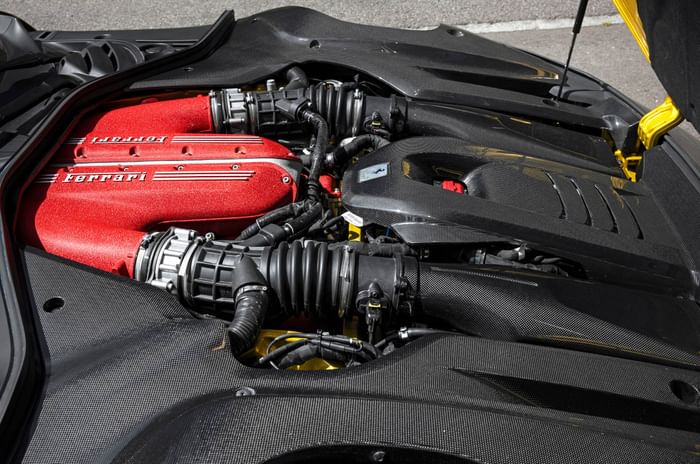
12Cilindri or “doe-dee-chee-chill-in-dree” translates to 12 cylinders in Italian. That’s also the name of the latest Ferrari. Now you might think that’s quite an unimaginative name (though it sounds so much nicer pronounced in Italian) but it’s actually a celebration of 12 cylinders in their purest form.
This 6.5-litre V12, carried over from the 812 Competizione, the 12 Cilindri’s predecessor, is the last of a breed. It has no turbos, no hybrid tech, just pure natural aspiration, and it still manages to crank out 830hp at a screaming 9,250rpm. For Ferrari, the V12 is iconic and deeply rooted in its history. The legendary Italian brand has always had a 12-cylinder in its portfolio since 1947 and Enzo Ferrari has always believed that the V12 engine is the only one that can give a car a soul.
.jpg?w=700&c=0)
But not even in his wildest dreams could Enzo ever have foreseen that the V12 would be under threat, on the verge of becoming extinct. In today’s world of electrons, volts and lithium-ion, the naturally-aspirated V12 is a rarity and, fittingly, it is Ferrari that remains as the last big sportscar maker in the world to offer one uncorrupted by turbos or e-motors.
| Ferrari 12Cilindri Price, Mileage, Specifications, Features and Variants | |
|---|---|
| Brand | Ferrari |
| Model Name | 12Cilindri |
| Ferrari 12Cilindri Price | ₹ 9.81 - 10.56 crore |
| Ferrari 12Cilindri Range/Mileage | NA |
| Ferrari 12Cilindri Specifications | Coupe/Convertible | 2 doors | 2 seats View All Specs |
| Ferrari 12Cilindri Features | LED headlight | 10.25-inch Touchscreen display | 6 airbags View All Features |
| Ferrari 12Cilindri Variants | Coupe | Spider View All Variants |
The lineage of the 12Cilindri goes back to the 550 Maranello which was followed by the 575, 599, F12 and 812 Superfast. Each of these models was faster and more aggressive than its predecessor with the 812 being particularly extreme. But now there’s been a shift in the positioning of Ferrari’s V12 flagship.
The company says the 12Cilindri has a different goal. It’s not to be the fastest or most powerful Ferrari (that mantle has been given to the SF90) but to be the most complete GT or Grand Touring car. That means it’s no more a knife edge (like the 812) but a more rounded car with a wider range of talents. And it’s a car that harks back to tradition, to a bygone era of great design of the 1970s.
Ferrarri 12Cilindri: exterior design
The styling is clearly inspired by the 365 GTB/4, the original Ferrari Daytona. The black band across the nose (you can’t have it in body colour) and the set-back headlights pay homage to the original Daytona’s smooth and almost faceless nose. The clean and relatively uncluttered surfaces, the incredibly long bonnet with voluptuous fenders wrapping themselves around massive 21-inch wheels and a cabin that looks like its perched on the rear axle are also strong Daytona influences.
.jpg?w=700&c=0)
Modern touches are abundant in the 12Cilindri like the flush door handles, a sharp front lip that protrudes far forward (a worry on Indian roads) and subtle aero bits. The delta-wing roof motif – an innovative design element that combines a part glass roof with a sleek hardtop – looks quite radical, especially from the rear, and may split opinion. The small rear screen does look a touch odd and the large surrounds for the rectangular exhausts looks out of proportion.
Two discreet winglets on either side of the rear deploy between 60kph and 300kph, generating up to 50kg of downforce. If you’re wondering why Ferrari didn’t opt for a large rear wing, it’s because that would have compromised the 270-litre boot space – surprisingly generous for a 830hp super coupé. After all, you’ll need room for your designer luggage on those long-distance drives.
.jpg?w=700&c=0)
The front-hinged clamshell bonnet is an impressive single piece of aluminum that integrates both the front wings and the engine cover. It’s a remarkable engineering feat, designed to fit tightly around the 21-inch front wheels. Lifting this massive bonnet nicely exposes the chunky 275/35 front tyres and also reveals how far behind the front axle the V12 sits – like it’s buried under the windscreen. The 12Cilindri is effectively a ‘front mid-engined car with a near perfect 48.5:51.5 weight distribution biased marginally to the rear. Speaking of weight, the 12Cilindri uses a mix of lightweight materials, largely aluminium and some carbon fibre, to tip the scales at a relatively lightweight 1,560kg dry.
.jpg?w=700&c=0)
Ferrari 12Cilindri: interior and features
The 12Cilindri’s cabin uses the same design theme as its front engine siblings, the Roma and Purosangue. There are two distinct ‘zones’ – one for the driver and the passenger. A 15.6-inch digital instrument cluster greets the driver, whilst the passenger gets an 8.8-inch screen which displays the kind of data you’d want to see like speed, revs and g-forces. What’s new is a central 10.2-inch screen which now houses the aircon and seat functions. It sits low down and blends with the dashboard when its off, so it doesn’t distract you, but you have to take your eyes off the road to operate it. Also, the nose lift function is assigned to the central screen. In the Indian context that’s a function that should ideally be on the steering wheel so you can quickly raise the nose when a monstrous speed breaker springs up at you.
.jpg?w=700&c=0)
All other major controls and functions like the turn indicators, wipers, lights and the ‘Mannetino’ drive modes are all housed on the steering wheel. The haptic touch pads, which are common features on modern Ferraris, are fiddly to use even with indents designed to let you ‘feel’ the controls without having to take your eyes off the road. You have all the connectivity features, including wireless Apple CarPlay and Android Auto (which is wired) as well as a whole suite of ADAS features. Again, like in all newer Ferraris, there’s no in-built navigation system in the 12Cilindri because Ferrari assumes that most owners will plot their route using Google Maps off their phones.
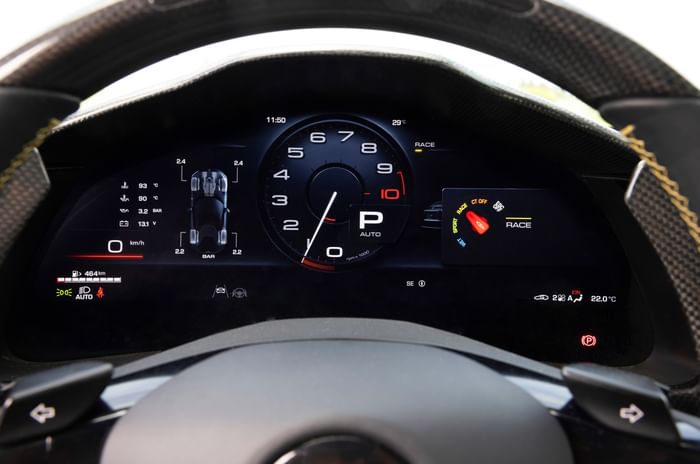
The cabin of the 12Cilindri is impeccably crafted, with premium materials that exude true luxury, without being deliberately minimal in the name of weight saving. The electrically adjustable ‘Goldrake’ seats fitted in this test car are supremely comfortable and a far more practical option than the sportier ‘Daytona’ racing buckets.
The transmission ‘gate’ again harks back to a Ferrari tradition, but of course it’s not a manual but operates a new eight-speed DCT gearbox and the launch control function.
.jpg?w=700&c=0)
Sadly, tradition isn’t carried over to the first point of contact with the V12. Instead of a solid, tactile starter button, a haptic touch pad on the steering wheel fires up the engine, which I have to say takes the thrill out of the ignition sequence.
Ferrari 12Cilindri: powertrain, performance
Press the haptic button on the steering wheel and the V12 bursts in into life but quickly settles down to a subdued idle. The first thing you notice is that this is not a very loud engine, like it was in the 812. At low revs, it’s certainly softer, with more mechanical and induction sound than a loud exhaust bellow. To hear the 12-cylinder symphony in all its glory, you have to rev the engine all the way to the 9,500rpm redline.
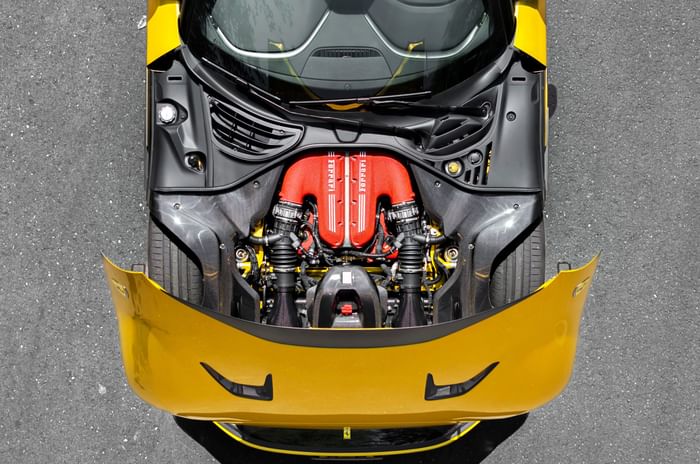
The challenge on the narrow public roads of rural Luxembourg’s test route is finding a stretch where you can safely (and legally) hit the rev limiter beyond the first two gears. However, the shorter ratios of the eight-speed DCT make it easier to redline the engine.
Though this smooth and refined V12 loves headbutting the limiter, it’s not something you can do all the time. Most owners will be driving at relaxed revs and that’s where the engine impresses too with its remarkable flexibility. It pulls cleanly and forcefully from as low as 2,000rpm, with power building like a giant wave all the way to the redline. Revving it to 9,500rpm unleashes a spine-tingling crescendo, creating a sensation of endless acceleration. The engine sounds epic when you floor the throttle, its pitch climbing to a high-pitched shriek at max revs. A lot of work has gone into redesigning the exhaust system to make it as sweet sounding as possible. However, some owners might find the aural drama not quite loud enough for their liking. It’s likely that aftermarket exhausts will become a popular upgrade for this car.
.jpg?w=700&c=0)
The 12Cilindri is nothing short of shockingly fast too, as the claimed 0-100kph time of 2.9 seconds and a 340kph top speed would suggest. On country roads in Luxembourg, the ferocious pace is amplified and it turns any stretch of tarmac into a blur. The eight-speed DCT is possibly the best twin-clutch auto transmission on the market. It is lightning quick with upshifts that are 30 percent faster than the previous seven-speed DCT. It works quite well in Auto mode too for expressway ‘grand touring’ and, for a gearbox that’s mated to a high strung engine, is remarkably smooth. But then who wants to drive a Ferrari like an automatic?
.jpg?w=700&c=0)
Ferrari 12Cilindri: ride and handling
On single-lane country roads, the 12Cilindri feels big, especially with that long bonnet stretching out in front of you. I can imagine this 4.73-metre long and 2.0-metre wide car testing your judgement (and nerves) in the motley mix of Mumbai traffic. The large turning circle doesn’t help whilst parking and its essential to spec the car with the camera system.
The steering, geared with under two turns lock-to-lock, is very quick off centre. Maybe too quick, with zero slack, and it takes some getting used to. This is an incredibly agile car that’s brilliantly balanced and is best driven with small and precise steering inputs. The rear-wheel steering makes the 12Cilindri super sensitive to direction changes and it feels like it’s pivoting around the driver, and unlike its mid-engine siblings, it doesn’t feel nervous or edgy.
.jpg?w=700&c=0)
Ride quality on some of the rare and mildly bumpy roads in Luxembourg was impressive but the true test will be on Indian roads. However, having driven quite a few Ferraris in both kinds of conditions, you can expect the 12Cilindri to soak up mild imperfections without a protest. The magic formula is the magnetorheological, semi-active dampers which have a ‘bumpy road’ setting and can be activated by merely giving the Manettino dial a simple push.
The brake-by-wire system has good bite and a short-travel pedal, which instils huge confidence when you’re driving quickly and something darts in your way.
Ferrari 12Cilindri: verdict
.jpg?w=700&c=0)
The 12 Cilindri is surprisingly easy to drive for a car that can otherwise be overwhelming. It’s unquestionably fast and refined at the same time. It’s a bold mix of cutting edge tech and heritage design, which some may find a bit too radical, but it’s undeniably Ferrari’s best GT car, a car that can thrill on both road and track. It’s coming to India next year, and with a price tag of around Rs 7.5 crore, you might want to start saving now.
Also See:
Ferrari 12 Cilindri video review
Tech Specs 
Copyright (c) Autocar India. All rights reserved.





 Engine
Engine Transmission
Transmission Efficiency
Efficiency Acceleration
Acceleration Body
Body Brakes
Brakes Dimensions
Dimensions
Comments
Member Login
Personal Details
No comments yet. Be the first to comment.